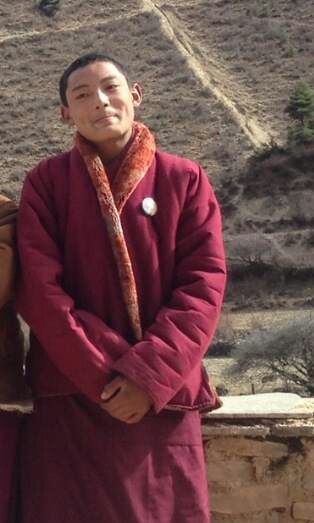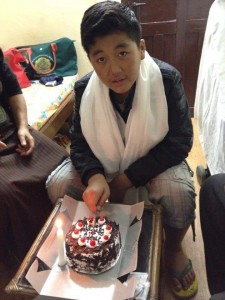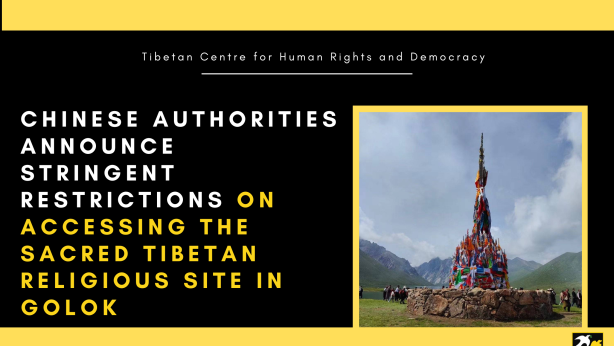Two Tibetan youths stage self-immolation protests in Tibet and India

The Tibetan Centre for Human Rights and Democracy (TCHRD) is deeply shocked and dismayed by the news of two self-immolation protests that occurred in quick succession on Monday. Both involved two Tibetan teenagers burning their bodies to bring international attention and scrutiny to the repression perpetuated by the Chinese authorities in Tibet. Till date, a confirmed number of 152 Tibetans have self-immolated, 144 in Tibet and eight outside Tibet.
On Monday, at 4 pm (local time) on 29 February 2016, an 18-year-old Tibetan monk named Kalsang Wangdu of Mari Tsokha Aryaling Monastery died after setting himself on fire and calling for “Tibet’s complete independence” and “May His Holiness the Dalai Lama live for 10,000 years” in Nyagrong (Ch: Xinlong) County, Kardze (Ch: Ganzi) Tibetan Autonomous Prefecture, Sichuan Province, in Tibet’s Kham province. The monk staged the self-immolation protest in his village Shiwa (Ch: Xiayi) in Mari (Ch:Mari) Township in Nyagrong County. He died on the way to Chengdu, the provincial capital, where he was being taken for treatment. Some local Tibetans who witnessed self-immolation took him to Chengdu but couldn’t save him.
Soon after Kalsang Wangdu’s self-immolation protest, local Chinese police arrived visited his home and ordered his family members not to share the news with anyone. They further ordered them to explain his death as part of a random fire that consumed the monk’s home. The family members are kept under police surveillance and not able to meet fellow villagers. As of now, the monk’s body is being kept at his home.
Reliable sources with contacts in Tibet said Kalsang Wangdu had left his monastery to visit his home village where he conducted funeral rites for a deceased man. He then returned to his own home in the village where he held prayers and offerings for the next three days before setting himself on fire outside his home.
Before becoming a monk, Kalsang Wangdu, son of Mr Sota and Mrs Urgen Dolma, attended a Chinese government school in Mari Tsokha region for about five years, but was expelled by school authorities for unknown reasons. He then became a monk in Mari Tsokha Monastery in 2014. Mari Tsokha Monastery is a Buddhist monastic institute with separate campuses for academics and meditational practices. Kalsang Wangdu was enrolled in the meditational classes.
On 29 February 2016, yet another Tibetan youth, Dorjee Tsering, aged 16, set himself ablaze at about 8:30 am local time near an old people’s facility built for elderly Tibetan refugees in Dehra Dun, north India. At the time of the self-immolation, Dorjee’s mother was present and she tried to save her son by pushing him under a water tap to extinguish the fire. Dorjee was then taken to Safdarjug Hospital in Delhi, a six-hour drive from the place of self-immolation. The Intensive Care Unit ward in Safdarjung hospital reported that he has suffered over 95% burns all over his body.

In media interviews given by Dorjee’s mother, it is evident that Dorjee’s self immolation was not a spur of the moment action. The 16-yr-old student of Class X at Tibetan Homes School in Mussoorie in northern India had previously talked about “doing something for his country” several times with his mother. Speaking from his hospital bed at Safdarjung Hospital in a video, Dorjee said he had thought about doing something for the cause of Tibet for a long time. “I want His Holiness the Dalai Lama to live long and Tibet to achieve its independence,” he said in the video.
Thubten Ngodrub was the first Tibetan to stage self-immolation as a form of political protest on 27 April 1998 in New Delhi. A total of 151 known Tibetans in and out of Tibet have followed him since then. Kalsang Wangdu and Dorjee Tsering became the first Tibetans to stage self-immolation protests in 2016.
The intensity and frequency of self-immolation protests have coincided with the level of repression and control exerted by Chinese policies in Tibet. The 2008 uprising and the deadly crackdown that followed further pushed an unprecedented number of Tibetans to burn their bodies to protest Chinese repression and for the international community to intervene to resolve the issue of Tibet. The number of self-immolation protests has steadily increased since 2011 in and out of Tibet, with an overwhelming number witnessed in Tibet in November 2012 when 28 Tibetan men and women from all walks of life resorted to self-immolation as a form of political protest. In November 2012, the Communist Party of China had convened its 18th National Congress to appoint new leaders including Xi Jinping as president and Li Keqiang as premier. The situation in Tibet has deteriorated further with the ascension of the new leadership and Tibetans as young as 16 year olds continue to give up their lives to call for freedom, human rights and for their spiritual leader Dalai Lama to return home.


